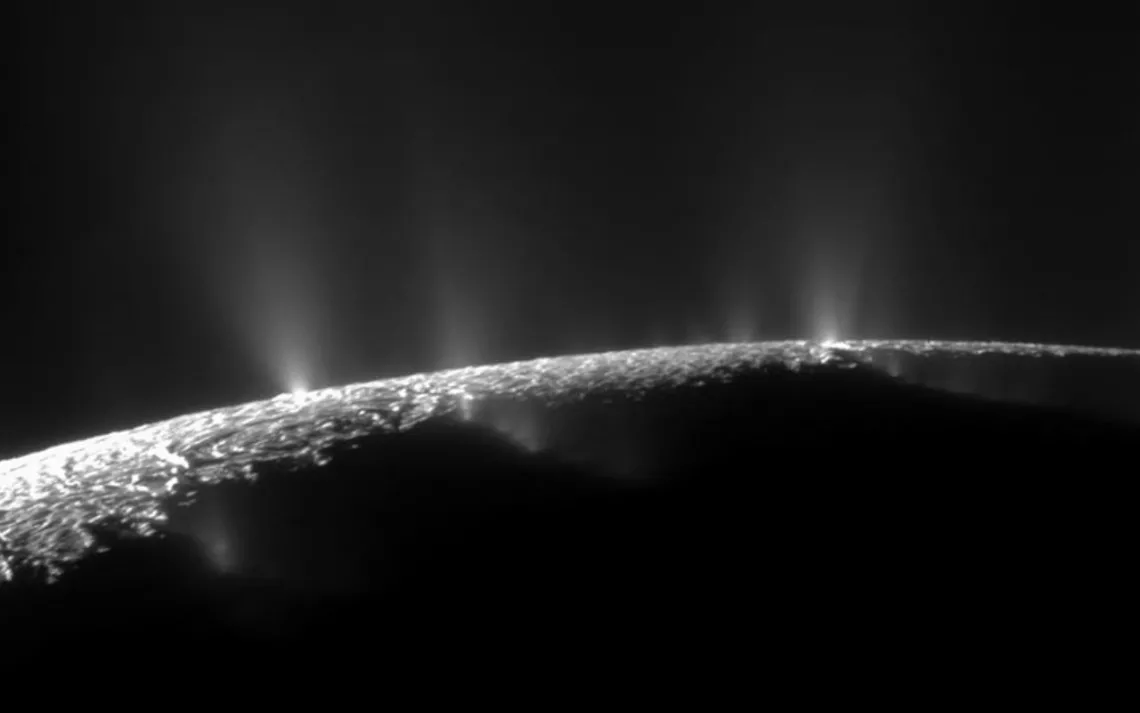The Behavior of Organics in Rapidly Frozen Brine

A dramatic plume sprays water ice and vapor from the south polar region of Saturn's moon Enceladus. Cassini's first hint of this plume came during the spacecraft's first close flyby of the icy moon on February 17, 2005.
NASA/JPL/Space Science Institute
NASA-supported scientists have provided new information about the behavior of organic molecules frozen in brine (e.g. salty water) under conditions similar to the surface of Saturn’s moon Enceladus. The results will help astrobiologists better understand the potential habitability of Enceladus’ subsurface ocean and could inform future missions designed to search for signs of life on icy, ocean worlds.
Enceladus is one of the most important locations in the Solar System for astrobiology research. In 2005, NASA’s Cassini spacecraft observed a plume of material erupting from fissures in the surface near the moon’s south pole. Since then, astrobiologists have been studying the makeup and behavior of this plume to gain insights about the composition and conditions of Enceladus’ otherwise inaccessible ocean.
Data from Cassini have shown that salts and organic matter are present within the frozen particles of water ejected in the plume. Organic matter refers to any compound that contains carbon and hydrogen. This includes a wide range of molecules, many of which are essential in living cells. The new study focuses on two such molecules, the amino acids glycine and aspartic acid.
The team of scientists performed a first-of-its-kind study on how these molecules behave when being rapidly frozen in brine. The results provide specific information about how the molecules become organized relative to salt minerals within the ice matrix. Ultimately, the findings indicate that ice particles rich in salts can cause organic molecules to become concentrated. This could be useful when searching for specific organic molecules that serve as biosignatures for life.
“While not all organic molecules are biosignatures, understanding the types and distributions of these molecules is important for assessing the habitability of an environment – whether that place has conditions suitable for life,” explains Morgan Cable of the NASA Jet Propulsion Laboratory, California Institute of Technology, and co-author on the study. “NASA has been historically operating under the mantra of ‘follow the water’ when it comes to the search for life; what our study shows is that we might want to add ‘follow the salts too’.”
